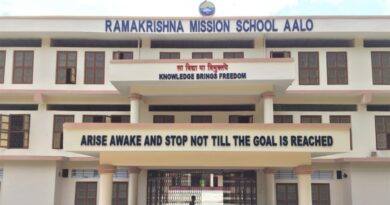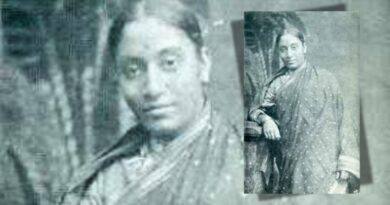Spotlight: Know The Psychology Of The Indian Diaspora
There is a significant difference between thediaspora Indians of the first generation and the next generations
First Generation
The Indian-ness or the Indian identity is very strong and prominent in the lives of the first generation of Indians. The first few months and years in a foreign country seem to be like living away from one’s own home. “We and others” that seems to be their feeling, the spontaneous line of thinking, the natural and normal behavior. There are aspects and elements which are deeply imbedded in the Indian psyche and it is almost impossible to wean way those significant elements when they leave India. They tend to carry with them at least five important elements which are deeply rooted in them. They are the language, religion, caste, food habit and culture. The beginnings of integration through assimilation is a process depending on many factors. But every diaspora Indian would want to integrate with the local community and experience the assimilation and have the Indian pride to feel that “Mine is a success story” here in this country. There are also other elements, but for most Indian diaspora these seem to be the defining aspects of Indian-ness.
For most Indian diaspora the world is very small, their family, place of work, place of worship and school/college. Young and old they are all deeply rooted in their family. The relationship with the parents, grandparents, uncles, cousins, etc., continues for the first generation. They tend to relate with the people who speak the same language in a foreign country. The one medium which would naturally help to interact is the local language for communication and interaction. The struggle of having to learn a foreign language is relative depending on the age, interest, exposure, etc. But as long as one does not learn the language of the land, their interaction would be limited to those who communicate their language. The women who have a little more exposure tend to learn the language faster than the men. Men tend to be shy about making mistakes or forming incorrect or incoherent sentences, but for women those are not that important to prevent them from learning a new language.
Most Indians tend to carry their religion with them. The amount of involvement in religious activities, celebrations, rituals and communitarian activities are carried along with them when they travel to foreign countries. Natural search for a holy place of their religion, a temple, a church, a mosque or any holy place of their religion draws them to relate to the same God with whom they are very familiar with. This is deeply rooted in the lives and psyche of Indians. The bonding takes place with the people of the same religion and with those who worship the same God/s. Religious bonding with others takes place through the media of ‘God/gods’. Therefore, it takes to while to have the same feeling of closeness with the people. The intimacy with the divine is natural and almost instant,but the relationship with the people of the same faith takes a while; to interact freely and to feel comfortable with them requires a few more aspects.
The curse or the most natural mindset of being Indian is its caste system. Whatever way one would want to look at it, it is going to be there. Whether you are educated or uneducated, whether it is reasonable or unreasonable, whether it is realistic or unrealistic, whether it is religious or irreligious, butevery Indian accepts the fact that it is social. Within India one of the first unasked query is ‘what is your caste!’ There are many Indians living abroad would spend sleepless nights wanting to find out the background, particularly the caste one belongs to. We do not tend to discuss this with foreigners, for the obvious reasons that they would tend to think, that Indians are backward, unreasonable, unrealistic, irrelevant, stupid, difficult to comprehend, etc. For these and many other reasons Indian diaspora avoids talking about it with foreigners and say it is very special to all Indians. This caste system defines, determines and identifies among Indians abroad who one is and what is one’s background, etc., etc. The caste system is a baggage an Indian would find it extremely difficult to unload and carry whenever and wherever there is a gathering of Indians. There is a sigh of relief and happiness that one belongs to the same caste and the bonding is unbelievably instantaneous. But it takes a while to know what caste one belongs to….
One thing Indians definitely carry with them is their food habits. The taste buds do not change overnight to adjust to the local food. For years they would tend to cook the same way the ‘mother’ had taught them and/or have learnt from the home of the in-laws. The type of food that one continues to eat is a marker or an indication how deeply rooted you are to being ‘Indian’. That which is common to all the Indian cuisine is the curry and that being pungent. But other than that the variation of curry and the level of pungency depend on the region one comes from and also on every conceivable dish of Indian origin. There is nothing Indian about the food, because we have to be very specific from which region or state of India one comes from and much more specific would be from which district of the state one comes from. There is nothing richer than the food habits of Indians. The variety is incredible, the types are unbelievable, that every Indian who begins to cook seem to produce a new recipe with new ingredients. That which is very special to Indians is their food habits and certainly it takes a long time before they begin to acclimatize and accept the local food. ‘It is never the same’ is the curt remark after a meal.
Indians carry with them their local culture. The culture lives on for a long time. There are Indians living in different parts of the world, may be second, third or more generations, but that which lives on in a community of Indians is their culture. The culture determines a group of people and keeps them together. But India does not have one culture, so the Indian culture lives on differently in different countries depending on the place of their origin in India. The first generation tends to follow the culture as purely as possible, while the successive generations would tend to assimilate local cultural elements and adapt to the situation and place. Culture gives identity to them. Among the many elements that which lives on for a long time is the culture. But often what we find would be the modified version of the culture. But we Indians are happy with the “juggard” and comfortable with the modified version rather than no Indian culture at all.
The first generation of Indians have one foot in India and one in another country. They go through lots of inner turmoil and struggle. They process their line of thinking from Indian style to a different and new style. They would tend to develop a new type of behavior from the traditional behavior they are used to. They would want to ‘instantly’ feel comfortable in the new place but unfortunately it takes a long time, and in most cases this happens with the successive generations who are born in a foreign country or who came to a country when they were very young and had done all their studies there. But the second or the successive generations of Indian diaspora is different.
The second-generation diaspora Indians search for a relevant and realistic Identity
Second Generation
The identity of being an Indian in the diaspora, ends with the first generation. But for the second generation of Indians, being an Indian is a concept and not a reality, continuous and constant struggle to identify as an Indian and a search within and without to find Indianness. They are born and brought up in a foreign country which is now their homeland and relatively comfortable environment, and gives them a greater sense of belonging to where they are. They speak the language of the place well and also most of them would communicate in their mother tongue relatively well, but it’s only a very small percentage who cut off completely the umbilical cord of their origin. As children they identify with their parents, but in course of time they begin to feel comfortable with the environment outside their home. There are two identities they struggle with, one at home and one outside their homes. They spend a lot of time trying to find a realistic and relevant identity, which would make them think, feel and act comfortably.
There are many areas they constantly strive to find a relevant identity, and I would like to discuss about five areas – new and local culture; importance of local religion, religion of the majority; struggling to come out of the caste system; the preference of food – Indian or local; and opportunities in life in the here and now.
Having experienced as children a transformed, mutated and micro-mini Indian culture within the family and among the gathering of Indians, the second generation of diaspora Indians are exposed to the local and seemingly a different culture from that of their parents and acquaintances. But fortunately, they are more comfortable with this foreign and local culture than the multi-dimensional and complex Indian culture. Indian culture is obviously diverse, but the new and local culture seem to be easy to assimilate and understand than the Indian culture. They have grown up with this culture of the land in the school, in the neighborhood, among their friends, among the many events they are exposed to as teenagers and adults as well as the natural connection of the language and the culture, the songs and programs, the food and the gatherings, etc. All these would be missing among the many Indian cultures.
Importance of the local religion, the religion of the majority: Most first generation Indians feel comfortable with their religion; but most of the second-generation Indians are comfortable with the local religion, there is a tendency to feel the affinity with the religion of the majority. But in the recent past this reality has gone through a significant change, that is, wanting to identify with the majority – secularism. For Indians the importance of the belief system and the relationship with the divine is unquestionable. That natural tendency, as according to St. Augustine of Hippo, that “our hearts are restless until they rest in [God]”, is no longer true in many countries as secularism has been growing fast and it is no secret that the second generation of Indians are increasingly comfortable with secularism or in some cases with the religion of the majority.
Struggling to come out of the caste system: For Indians the caste system though it began as a fundamental phenomenon of the Hindu religion, it has become part and parcel of the social system for Indians, obviously going beyond the religion to the society and affecting, influencing, conditioning, controlling, monitoring the entire Indian psyche. Every time the caste system is discussed the second generation of Indians feel uncomfortable in contrast to the first generation of Indians who ordinarily feel comfortable about it.
Because it has been deeply ingrained in the first generation, the second generation strives to come out of it, dissociate with it, unable to explain or convince others in the land in which they are and so strive and struggle to look for a new identity without the caste system. When the caste system is removed a significant ‘Indianness’ is also removed. Innumerable caste associated negative experiences and events outside India are shameful.
The preference of food – Indian or local: this is an area where the second generation of Indians struggle to find a relevant identity. As children they would have had enough and more Indian food, and they naturally like it and certainly enjoy it. But as grown ups they would be much more exposed to the local food. In course of time they get more comfortable with the look food. There is this natural struggle whether to prefer and choose the food of their childhood or to like the food of their peers and friends, and naturally the struggle ends in most cases with the preference for the local food. Is it because of peer pressure, because of the easy availability, not wanting to be dissociated from the local community, not ready to be classified as different from the group, etc. This struggle for a relevant and realistic identity with the choice of food is an everyday incident for most of the second-generation diaspora Indians.
Opportunities in life in the here and now: that which gives a definite identity which would be relevant and realistic would be the opportunities in life. A seed of a big dream has been sown in the mind of the second generation Indians. ‘You ought to not only have a big dream in life but should achieve it’ would be the refrain one would have heard many times. The many opportunities in life are occasions to realize those dreams.
Anyone who attains some dream opportunities would find a new identity. Until one realizes the dream opportunities in life, there is this struggle to find a relevant identity. Looking for new opportunities in life, progressing towards the set goals, striving for bigger challenges, dreaming to make a big name, aspiring towards unclear dreams are times and occasions when a diaspora Indian goes through a big struggle to search and to find an identity.
The second-generation of diaspora Indians have a very clear awareness of the country where they are as away from India and as their new-found land. In their emotion there is this constant struggle to find a new identity with the country where they are or with the country of their origin and this remains a prolonged struggle. They strive and strive to have an identity which must be relevant and realistic.
Their struggle between the Indian culture and the local culture; the religion of the local majority and the religion of their parents; the understanding and practices of caste system; the preference for local food or Indian food and the search for opportunities here and now for diaspora Indians are normal and natural. But the question we have is: what is the mindset of the second-generation diaspora Indians……
This was the Last article of Rev.Fr. Amirtha Raj Mannes,OP.





